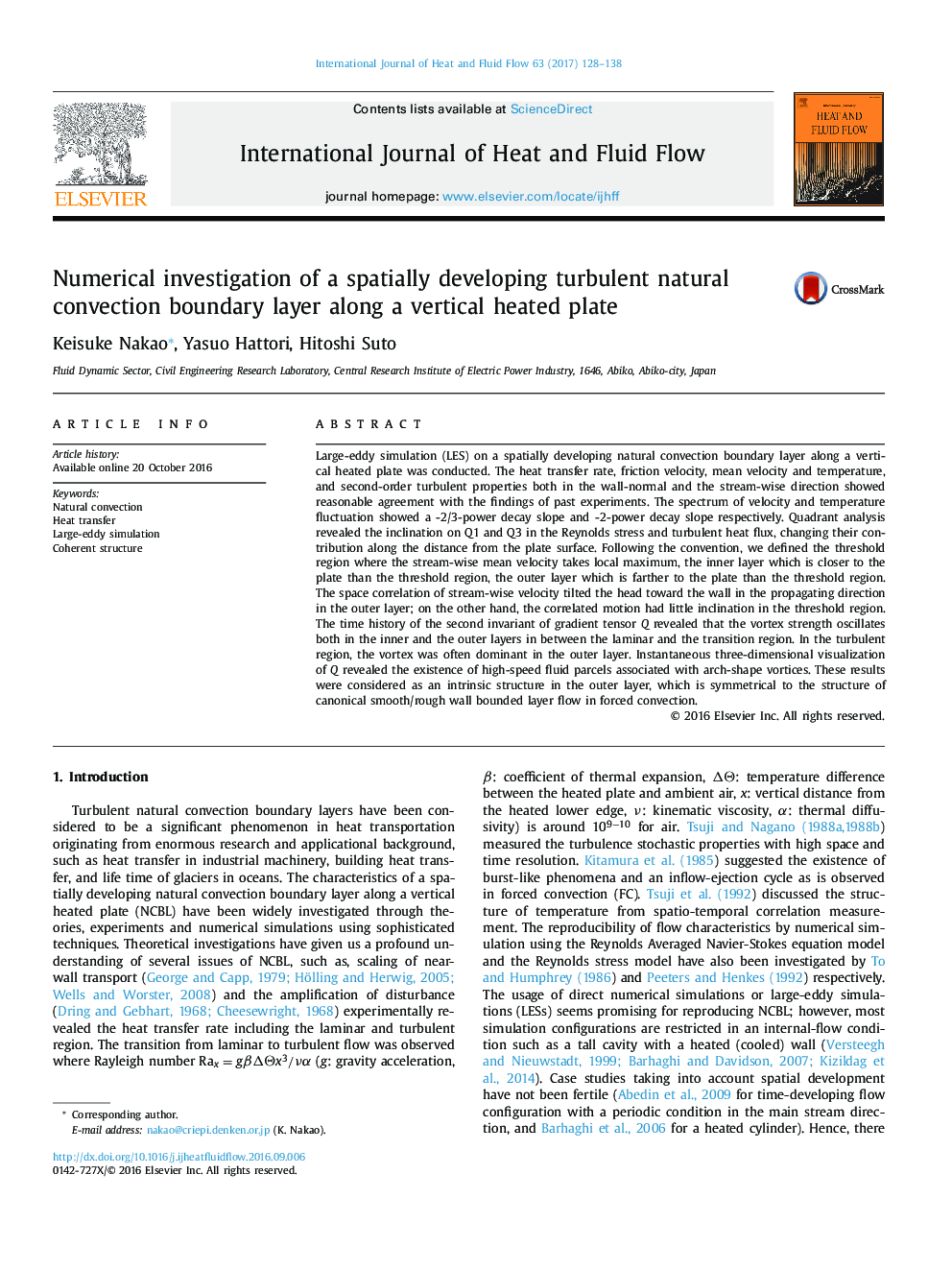| کد مقاله | کد نشریه | سال انتشار | مقاله انگلیسی | نسخه تمام متن |
|---|---|---|---|---|
| 4993301 | 1457616 | 2017 | 11 صفحه PDF | دانلود رایگان |
- A large-eddy simulation of a spatially developing natural convection boundary layer is conducted.
- First- and second-order moments of the heat and momentum showed a reasonable agreement with past experiments.
- Coherent structure of turbulent vortex inherent in this boundary layer is discussed.
Large-eddy simulation (LES) on a spatially developing natural convection boundary layer along a vertical heated plate was conducted. The heat transfer rate, friction velocity, mean velocity and temperature, and second-order turbulent properties both in the wall-normal and the stream-wise direction showed reasonable agreement with the findings of past experiments. The spectrum of velocity and temperature fluctuation showed a -2/3-power decay slope and -2-power decay slope respectively. Quadrant analysis revealed the inclination on Q1 and Q3 in the Reynolds stress and turbulent heat flux, changing their contribution along the distance from the plate surface. Following the convention, we defined the threshold region where the stream-wise mean velocity takes local maximum, the inner layer which is closer to the plate than the threshold region, the outer layer which is farther to the plate than the threshold region. The space correlation of stream-wise velocity tilted the head toward the wall in the propagating direction in the outer layer; on the other hand, the correlated motion had little inclination in the threshold region. The time history of the second invariant of gradient tensor Q revealed that the vortex strength oscillates both in the inner and the outer layers in between the laminar and the transition region. In the turbulent region, the vortex was often dominant in the outer layer. Instantaneous three-dimensional visualization of Q revealed the existence of high-speed fluid parcels associated with arch-shape vortices. These results were considered as an intrinsic structure in the outer layer, which is symmetrical to the structure of canonical smooth/rough wall bounded layer flow in forced convection.
Journal: International Journal of Heat and Fluid Flow - Volume 63, February 2017, Pages 128-138
